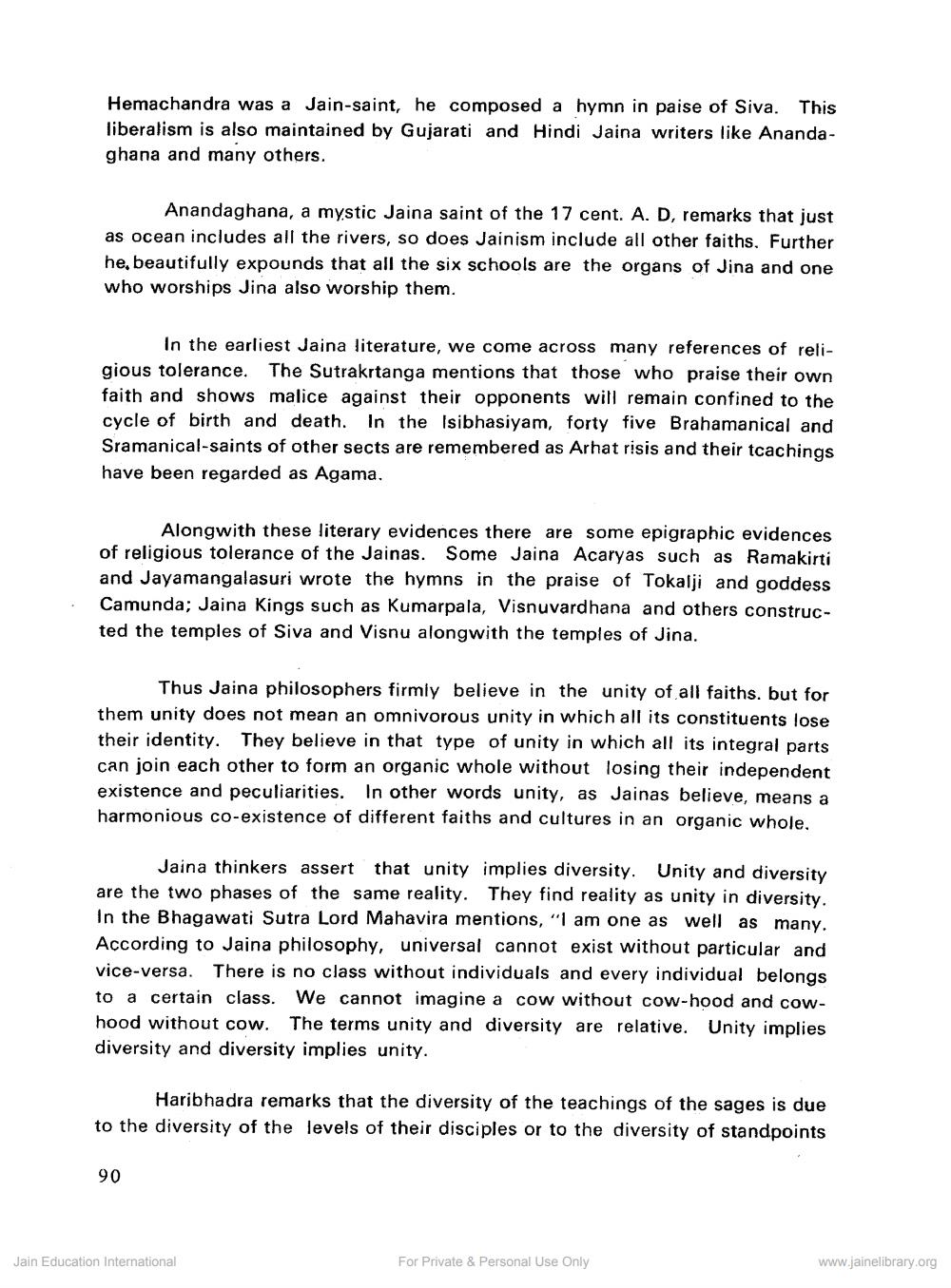________________
Hemachandra was a Jain-saint, he composed a hymn in paise of Siva. This liberalism is also maintained by Gujarati and Hindi Jaina writers like Anandaghana and many others.
Anandaghana, a mystic Jaina saint of the 17 cent. A. D, remarks that just as ocean includes all the rivers, so does Jainism include all other faiths. Further he, beautifully expounds that all the six schools are the organs of Jina and one who worships Jina also worship them.
In the earliest Jaina literature, we come across many references of religious tolerance. The Sutrakrtanga mentions that those who praise their own faith and shows malice against their opponents will remain confined to the cycle of birth and death. In the Isibhasiyam, forty five Brahamanical and Sramanical-saints of other sects are remembered as Arhat risis and their tcachings have been regarded as Agama.
Alongwith these literary evidences there are some epigraphic evidences of religious tolerance of the Jainas. Some Jaina Acaryas such as Ramakirti and Jayamangalasuri wrote the hymns in the praise of Tokalji and goddess Camunda; Jaina Kings such as Kumarpala, Visnuvardhana and others constructed the temples of Siva and Visnu alongwith the temples of Jina.
Thus Jaina philosophers firmly believe in the unity of all faiths, but for them unity does not mean an omnivorous unity in which all its constituents lose their identity. They believe in that type of unity in which all its integral parts can join each other to form an organic whole without losing their independent existence and peculiarities. In other words unity, as Jainas believe, means a harmonious co-existence of different faiths and cultures in an organic whole.
Jaina thinkers assert that unity implies diversity. Unity and diversity are the two phases of the same reality. They find reality as unity in diversity. In the Bhagawati Sutra Lord Mahavira mentions, “I am one as well as many. According to Jaina philosophy, universal cannot exist without particular and vice-versa. There is no class without individuals and every individual belongs to a certain class. We cannot imagine a cow without cow-hood and cowhood without cow. The terms unity and diversity are relative. Unity implies diversity and diversity implies unity.
Haribhadra remarks that the diversity of the teachings of the sages is due to the diversity of the levels of their disciples or to the diversity of standpoints
90
Jain Education International
For Private & Personal Use Only
www.jainelibrary.org




